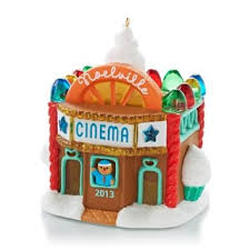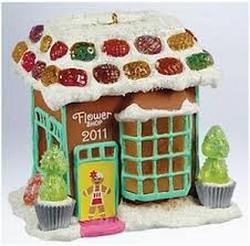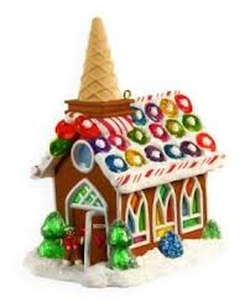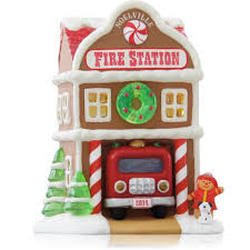Noelville
Have you ever wondered why Christmas villages are so popular? Each year, there are so many villages on display. Department 56 alone has 5 or 6 different Christmas village sets. I collected a series sold by Ace Hardware stores for many years. So, its no surprise that Hallmark would also have a couple of series of Christmas villages, and this page in particular takes a look at the Noelville series. But what makes these village reappear, year after year? And even more surprising is that each year there are completely new pieces!
There are really two main reasons why we keep seeing Christmas villages, beyond the obvious nostalgic yearning for "simpler days," and all of that sort of thing. The first reason has to do with Order. The second, with Vocation. And both of these reasons are intertwined.
When I speak of Order (with a capital O), that automatically refers to the grand Order, not just found in God, but also emanating from him, permeating throughout all of his creation. In fact, I have read that what we experience as a feeling of vague nostalgia is really a deep longing for our original connection with God, which occurred at our creation. Having once experienced it, we never quite forget it, even though we are torn from it by original (and later) and personal sin. Christmas Villages recreate this visual sense of Order. Everything is in exactly the right place. There is harmony. There is peace. There is abundance. There is fellowship. The presence of God is manifest, not just in the churches but even more importantly, in the people and in everyplace they inhabit.
And that brings us to the second reason - Vocation. Vocation is our response to God's invitation. It is what we do with what he has given us. We often think of this in terms of the call to Holy Orders and Religious Life, but that is only one type of Vocation. Each and every one of us, in fact, has a Vocation - has a special and particular set of gifts and experiences best used to build the Kingdom in a certain way. We recognize that when God is everywhere and in everything, as these Christmas Villages visually paint the picture for us, then it follows that of course our work will also be God's work. The perfect harmony of the North Pole, so to speak, will be manifest in the entire world. The shoemaker, for example, will be creating shoes with great love, that will enable the wearers to follow in the footsteps of Christ. The home will be filled with harmony and peace. It will be a reflection of the love and harmony of the family of the Trinity. The great news, here and now, is that we can already unite our daily work to God's work. In fact, that's what building the Kingdom is all about. Let's take a look at each of the Noelville ornaments, which actually light up - a perfect metaphor for the each area of the world, and for every area of our work, being flooded and filled with the light of Christ.
There are really two main reasons why we keep seeing Christmas villages, beyond the obvious nostalgic yearning for "simpler days," and all of that sort of thing. The first reason has to do with Order. The second, with Vocation. And both of these reasons are intertwined.
When I speak of Order (with a capital O), that automatically refers to the grand Order, not just found in God, but also emanating from him, permeating throughout all of his creation. In fact, I have read that what we experience as a feeling of vague nostalgia is really a deep longing for our original connection with God, which occurred at our creation. Having once experienced it, we never quite forget it, even though we are torn from it by original (and later) and personal sin. Christmas Villages recreate this visual sense of Order. Everything is in exactly the right place. There is harmony. There is peace. There is abundance. There is fellowship. The presence of God is manifest, not just in the churches but even more importantly, in the people and in everyplace they inhabit.
And that brings us to the second reason - Vocation. Vocation is our response to God's invitation. It is what we do with what he has given us. We often think of this in terms of the call to Holy Orders and Religious Life, but that is only one type of Vocation. Each and every one of us, in fact, has a Vocation - has a special and particular set of gifts and experiences best used to build the Kingdom in a certain way. We recognize that when God is everywhere and in everything, as these Christmas Villages visually paint the picture for us, then it follows that of course our work will also be God's work. The perfect harmony of the North Pole, so to speak, will be manifest in the entire world. The shoemaker, for example, will be creating shoes with great love, that will enable the wearers to follow in the footsteps of Christ. The home will be filled with harmony and peace. It will be a reflection of the love and harmony of the family of the Trinity. The great news, here and now, is that we can already unite our daily work to God's work. In fact, that's what building the Kingdom is all about. Let's take a look at each of the Noelville ornaments, which actually light up - a perfect metaphor for the each area of the world, and for every area of our work, being flooded and filled with the light of Christ.








